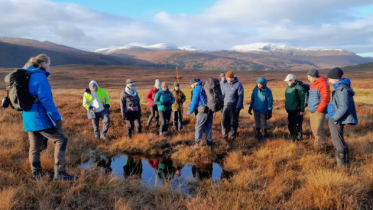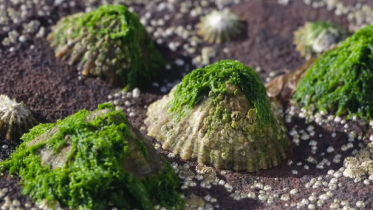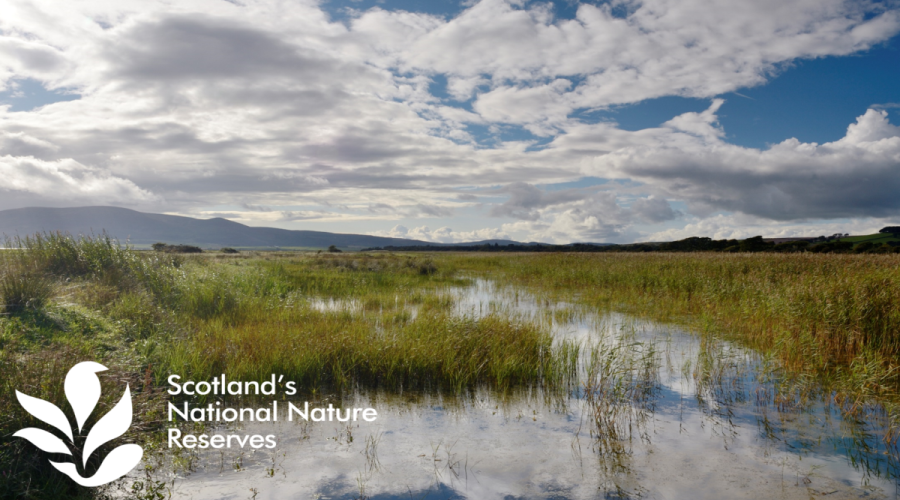
Nature Networks - Habitats
Browse habitat guidance to help inform management of a variety of habitats.
This page signposts guidance, predominately from voluntary organisations and public bodies in Scotland and the rest of the UK, which may assist in the planning, implementation and management of Nature Networks. Broader guidance and information on habitat types in Scotland is also available.
Guidance relates to improving habitat quality and diversity, expanding habitat range (via restoration or new habitat creation), improving connectivity within or between habitat patches, how to monitor the quality and extent of habitat and information on key species within that habitat or ecosystem type.
The list of guidance is not exhaustive and offers a starting point for reference only. The guidance listed may not be Scotland specific, and practitioners are advised to ground truth their site, and explore the latest guidance before beginning work.
Forest and Woodland
Native tree and shrub species provide much of our wildlife with its natural habitats, forming a valuable part of Scotland’s nature and landscapes. Woodland ecosystems also offer many benefits to Scotland’s people – from food, timber and recreation to carbon storage and cleaner air. Foresters, farmers, communities, conservation bodies and others involved in woodland management should take account of these ecosystem services.
NatureScot recommends multipurpose management of Scotland’s forests and woodlands. This considers wide-ranging objectives from carbon management to cultural values as well as connectivity for people and nature.
Woodland and forestry policy overlap with Nature Networks e.g., NPF4 Policy 6 states that “LDPs, as well as identifying and protecting existing woodlands, should identify their potential for enhancement and improved ecological connectivity through helping to support and expand Nature Networks”. The UK Forestry Standard (UKFS) recognises the importance of ecological connectivity and includes a guideline relating to connectivity.
Tweed Forum Practitioner's guide to Riparian Woodland Creation
“Focused on establishment of riparian woodland in upper catchment areas this guidance is designed to be accessible for all. It covers the full journey from engaging landowners and design through to acquiring funding and delivering native riparian woodland. It blends practical advice based on the experience of the contributors with information drawn from a wide variety of sources.”
Scottish Forestry Woodland Grazing toolbox
“In depth guidance for developing a Woodland Grazing Plan designed for woodland owners, managers and farmers seeking to manage their woodlands to achieve biodiversity objectives, contributing to the objectives of Nature Networks, using livestock as a management tool.”
Management guidance for Scotland’s rainforest: Alliance for Scotland's Rainforest
“A constantly updating resource on beneficial management for woodlands found in Scotland’s valuable Rainforest zone running along the west coast of Scotland. It includes sections on key pressures (invasive non-natives and herbivore pressure, as well advice on creation connections between areas of rainforest.”
Tree Equity Score UK Tree Equity
“Particularly helpful in the urban/peri-urban environment when trying to decide where trees may be a particularly valuable addition to Nature Network corridors. The tool is limited in scope to areas around the Central Belt and towns and cities on the east of Scotland.”
Scottish Forestry (2009) guidance on developing native woodland habitat networks and Forest Research (2008) advice on the Forest Habitat Network in Scotland.
“Advice for land managers on locating native woodland expansion in order to help to develop habitat networks. Native woodland expansion includes the creation of new native woods and conversion from non-native woods. Biodiversity benefits are higher where expansion helps to develop habitat networks, which help woodland-dependent native species to spread and to adapt to climate change”.
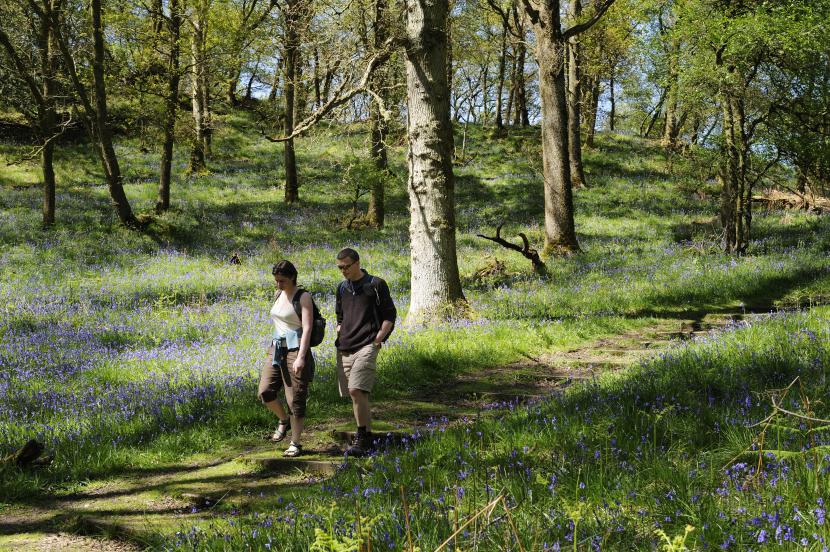
Grassland
Grasslands are important habitats supporting many species, often associated with and shaped by rich underlying geology.
In an urban areas, small grassland features, such as roadside verges and wildflower areas, can form important corridors for pollinators and other species. Amenity grasslands, such as parks and golf courses, can also act as important sites for nature where managed to benefit biodiversity.
Plantlife Meadows Guidance
Contains advice for individuals, communities or land managers on creating and maintaining meadows at different scales, which may form habitat patches within a Nature Network. This includes both practical information as well links to potential funds for meadow creation/maintenance.
NatureScot Species rich grassland guidance
Contains advice on grassland maintenance and restoration, as well as links to other useful resources.
Freshwater and Wetlands
This broad array of ecosystems includes lochs and rivers and their surrounding vegetation alongside wetlands all supporting an important array of habitats and species.
Natural and man-made ponds, though sometimes small, can support a wealth of wildlife and act as important stepping-stones between larger water bodies.
Fens, marshes, swamps, reed beds, flushes, springs and lowland raised bogs are all elements of Scotland’s wetlands. These special areas support birds, insects and plants, give us clean water, help to moderate floods and maintain river flows, and store vast amounts of carbon.
Rivers offer natural corridors for species movement, when the habitat is appropriately managed, and offer significant opportunities to form the basis of a local or regional, catchment scale, Nature Network.
River Basin Management Plans set out actions to improve the quality of the water environment, including removing barriers to wild fish migration.
Froglife Land Managers Advice (ponds)
Advice on the management of ponds for wildlife. Likely to form important stepping stone habitats within many Nature Networks, bringing back clean water ponds to landscapes after centuries of their infilling and loss.
SEPA: A functional typology for wetlands in Scotland
SEPA guidance on 17 wetland types in Scotland. For each wetland type, field indicators have been selected including landscape setting, hydrological features, soil type and vegetation types, that can help to identify the habitat. Guidance on identifying landscape setting and other wetland features is provided, in addition to identifying habitats, to allow a basic understanding of the function of the wetland.
Natural Resource Wales “Conservation actions for freshwater habitats"
Page 41 of the document contains useful suggestions for simple actions to conserve freshwater habitats as part of a Nature Network.
Peatland
Peatlands offer a significant opportunity to deliver nature-based solutions to the climate and biodiversity crisis. As stores of carbon, they are important in tackling climate change and as the basis of rural farming, sporting, tourism and crofting they are vital to the economy. They also play a role in flood regulation, water quality and support nationally and internationally important biodiversity. Peatlands cover a significant proportion of Scotland's land area, many designated as 30 by 30 sites with further restoration key to the coherence of Nature Networks across large parts of Scotland.
NatureScot Peatland Action Handbook of Useful Guidance
A comprehensive and accessible overview of the procedural and technical requirements for peatland restoration in Scotland, particularly helpful for practitioners planning or undertaking peatland restoration work.
NatureScot Peatland ACTION fund
The homepage for those keen to apply for funds to carry out peatland restoration work.
Soil Association Peatland Code Validation
The Peatland Code is a voluntary certification standard for UK peatland projects wishing to market the climate benefits of restoration. It provides assurances to carbon market buyers that the projects they are investing in are credible and deliverable.
Coastal
Scotland has the bulk of the UK’s sand dunes, and they back some of Europe’s most spectacular beaches. Scotland’s coasts also support a wide range of superb cliff habitats, home to globally important seabird colonies, maritime heaths and grasslands.
Saltmarsh forms in sheltered environments at the head of bays and inlets, where the tide covers plants twice daily. Habitats that rely on human activities such as machair alongside rare habitats such as shingle all can form important parts of a Nature Network bringing biodiversity gains alongside benefits to coastal communities through nature based solutions to priority issues, such as Coastal Adaptation Planning.
Scottish Marine Environmental Enhancement Fund (SMEEF) Restoration toolkit
This toolkit offers a one stop shop for restoration in the marine and coastal environment, distilling the necessary information for running coastal enhancement projects into an easy access format that can be tailored to your own project and shared with partners.
Urban
Urban greenspace includes gardens, amenity land, cemeteries, parks and sports and play areas. Ensuring greenspaces in towns and cities are also biodiverse spaces can allow them to contribute to reversing biodiversity decline, tackle habitat fragmentation, bring multiple benefits to local communities and provide vital parts of Nature Networks.
Disturbed and brownfield sites, such as vacant and derelict land, bings etc can also offer important refugia for urban wildlife often creating homes for unique and rare invertebrates, plants and lichens communities.
Future Parks Accelerator Urban Nature Networks Resource Hub
Guidance on how to develop an urban nature network in your community, from securing the right expertise to creating a delivery plan alongside case studies and a handy ‘10 point plan’.
NHS greenspace - good design of outdoor estates
Informs the design process of healthcare facilities demonstrating how the grounds can contribute to a wider Nature Network.
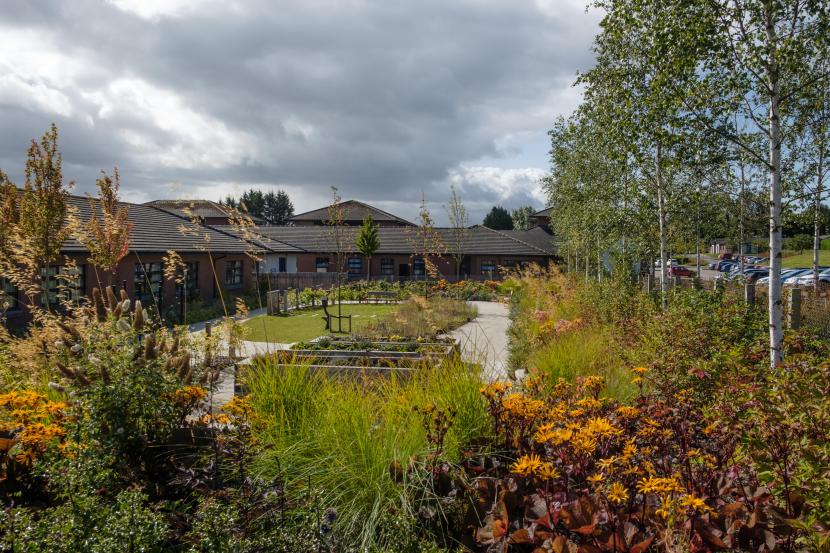
Part of the Green Exercise Partnership which is a joint venture between Scottish Forestry, NatureScot and NHS Scotland
Please help to keep the toolbox useful and up to date by inputting to what needs to be included.
Please share your feedback on existing resources, links to other resources or ideas for guidance that is still needed via this online form.

